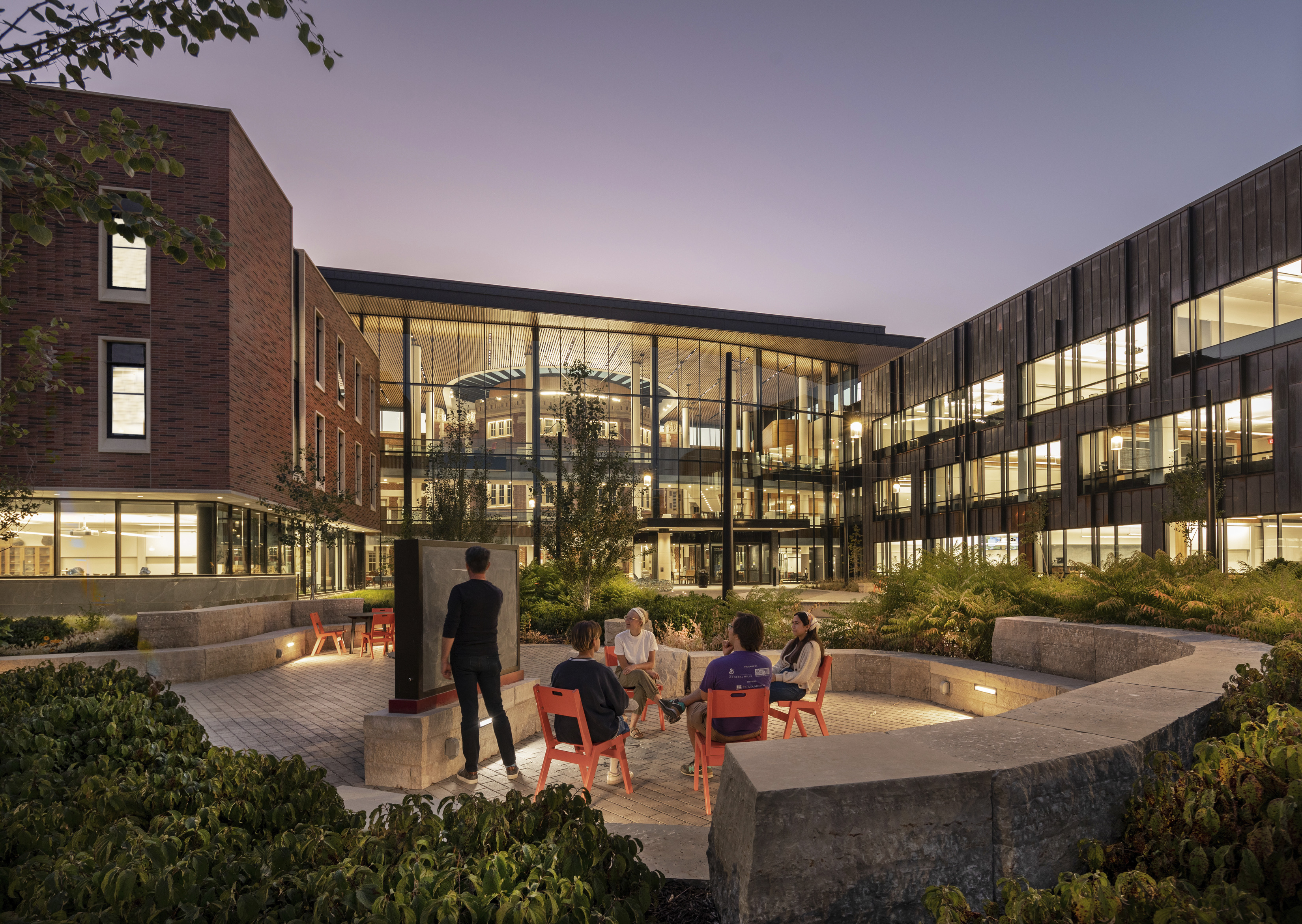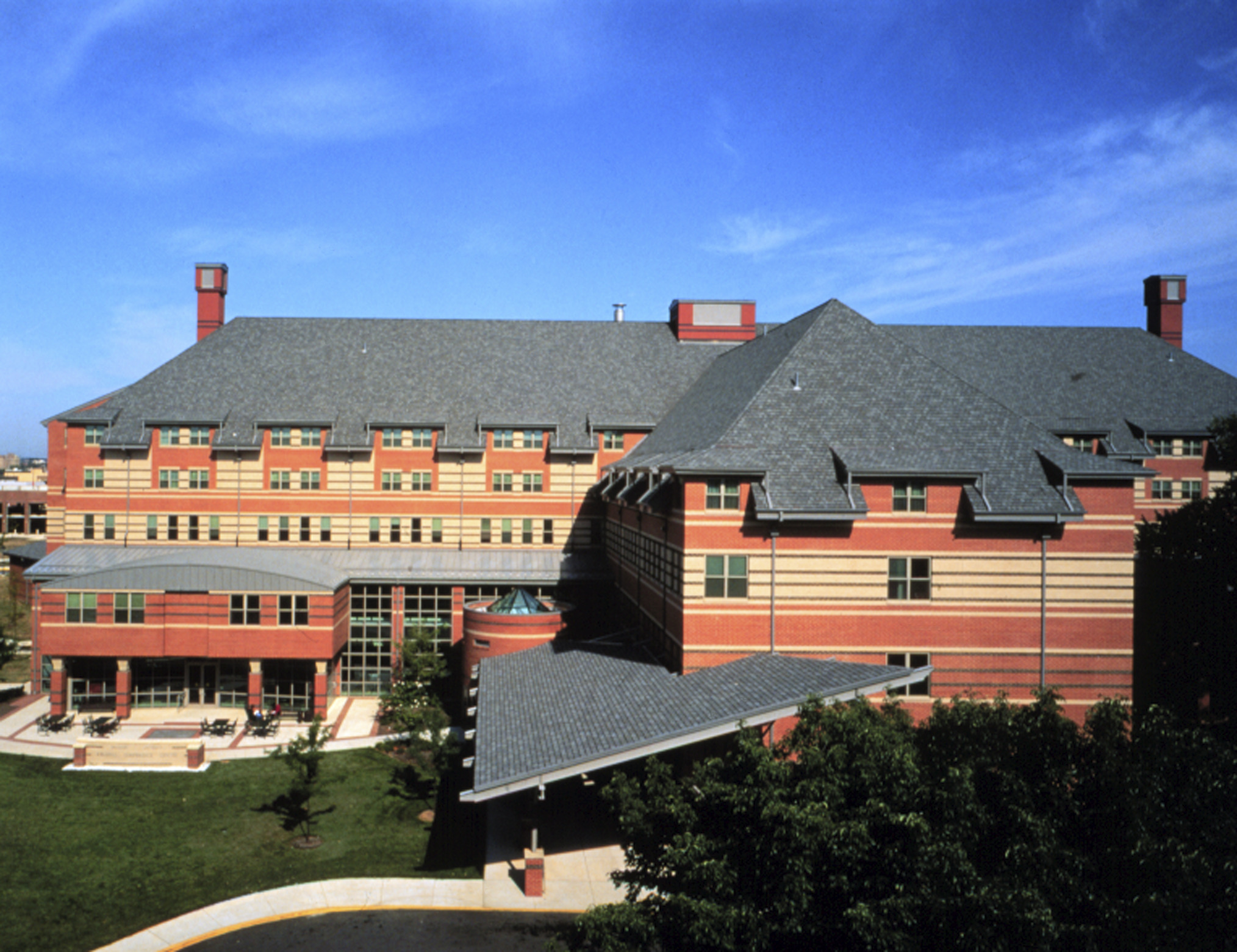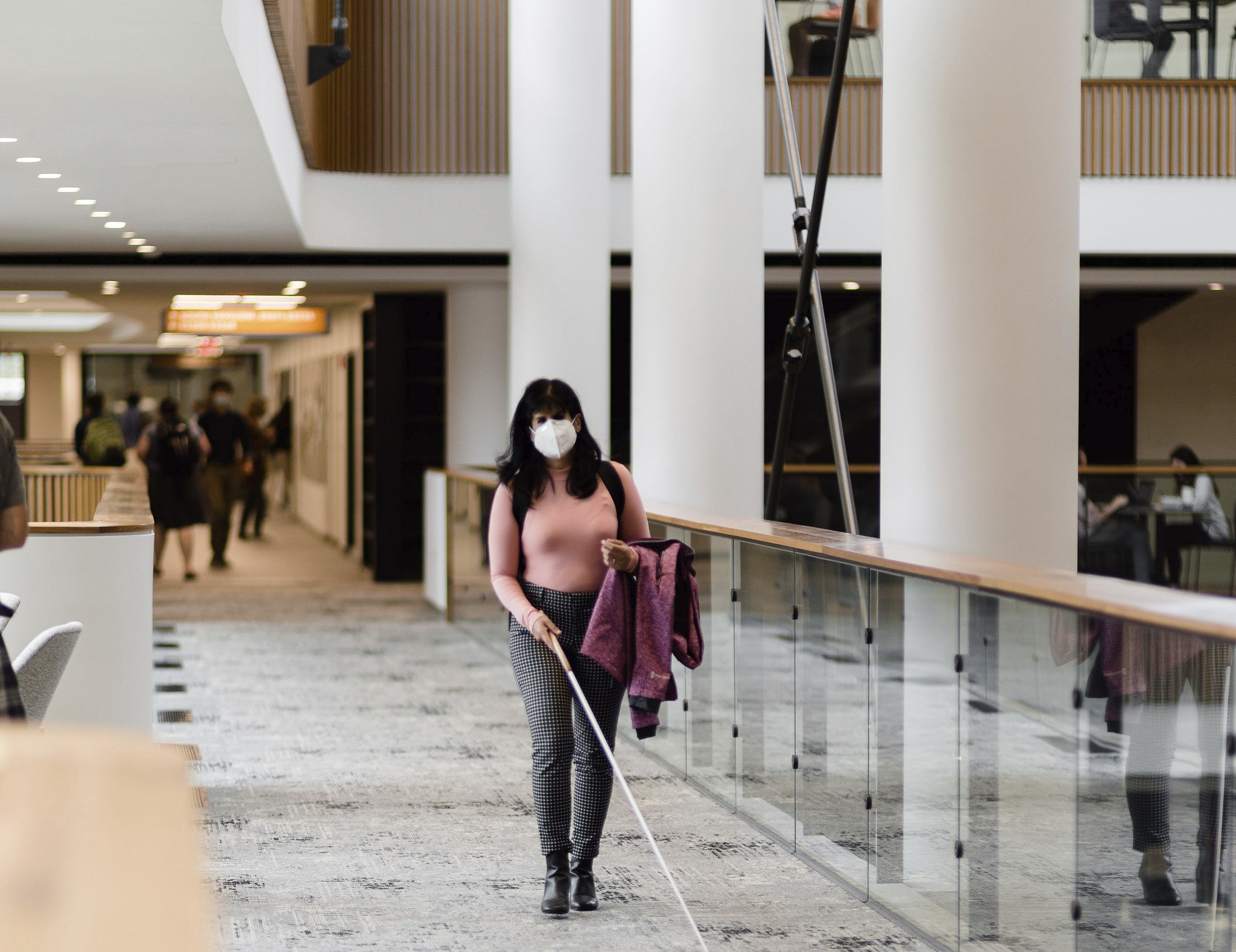
Imagine you’re a Grinnell student entering the Humanities and Social Studies Center, searching for a study area to prepare for final exams. An abundance of natural light greets you without an overwhelmingly intense glare. And, despite the groups of students collaborating in study rooms and lounge areas, the environment is surprisingly quiet thanks to sound-absorbing materials. The wide corridors and clear sight lines create a sense of openness, allowing you to effortlessly find your way while offering adequate space for busy students to navigate the active common spaces. The first floor is full, so you take a conveniently located elevator to continue your search for an available study space on another level.
Partnering with the Institute for Human Centered Design, at Grinnell, Page challenged ourselves to go beyond responding to the Americans with Disabilities Act (ADA) requirements and move toward designing for the broadest possible spectrum of users.
In 1990 the US Congress passed ADA to end discrimination and guarantee equal opportunities for people with disabilities. Think about ramps, elevators, wide hallways, and easy-to-read signs – all of these are part of ADA guidelines, and all are focused on making the world more inclusive, one building at a time.
Although ADA regulations have transformed building design, these guidelines are just a starting point in designing for the broadest spectrum of society. With 56 million Americans with disabilities – one of the largest minority groups – architects and designers need to recognize their role in shaping a more equitable landscape.
A Long History
What would the world look like if every facility prioritized inclusivity and equity? A Page team, unofficially dubbed the Inclusive Design Think Tank, joined forces to consider this question. Devoted to making inclusive design a priority, the group is educating project teams on approaches for designing the built environment to make all lives better.

And we’ve been thinking this way for a long time! In 1994, Gallaudet University – an institution devoted exclusively to educating the deaf and hard of hearing – and Page designed the world’s first conference center for the hearing-impaired, the Kellogg Conference Center.
True to our client-first culture, two Page architects lived on campus for two weeks to better understand the community, developing an appreciation for the importance of lighting, color, and motion for the deaf. This perspective influenced design decisions, leading to brighter illumination so sign language could be easily observed, muted colors to encourage interpersonal communication, and a fountain in the lobby to offer visually engaging motion.
Fast forward to present day, Page designed the Austin Independent School District to serve 100 learners from across the school district with diverse, overlapping, and significant special needs.
A More Inclusive Future
The thoughtful integration of landscape and architectural elements, such as distance between stairs and elevators, plays a significant role in inclusive design. By providing accessible routes and minimizing physical barriers, these spaces ensure that individuals with mobility challenges or those using assistive devices can navigate seamlessly. Wider pathways, gently sloping walkways in lieu of ramps, and strategically placed elevators all contribute to a more inclusive design. While these considerations are common to many facilities, intentional and innovative approaches to lighting, acoustics, and all-gender spaces are more modern paths towards creating accessible spaces.

Glare from sunlight or artificial lighting can be visually disruptive and uncomfortable for many individuals, particularly those with sensitive eyes, permanent vision impairments, or a neurological disorder. Proper lighting placement and window treatments minimize glare and offer relief and comfort for users. Additionally, dimmable lighting allows users to adjust the intensity according to their needs, creating a customizable environment for diverse users. For example, in healthcare facilities adjustable lighting can provide patients with a soothing and calm atmosphere.
Sensitive approaches to acoustics can also play a pivotal role in equitable designs. By incorporating sound-absorbing materials, strategic room layouts, and controlling noise sources, designers can provide environments where conversations, presentations, and other activities are enjoyed without excessive reverberation. Additionally, technology that automates real-time captions can be employed in large lecture halls or conference rooms for people who are hard of hearing or deaf, so they don’t miss a word.
Inclusive restroom designs go beyond just functional considerations; it aims to create spaces that embrace diversity, promote comfort, and respect the needs of all individuals. ADA regulations require grab bars, handicap-accessible stalls, and infant changing stations, but reimagining restrooms to create all-gender spaces fosters a more equitable environment. For example, designing single-stall all-gender restrooms or expanding multi-stall partitions can increase privacy and create inclusive options.
Inclusive design is an ongoing conversation; we continuously reevaluate a building’ s usability based on evolving standards. Page’s Inclusive Design Think Tank has a lofty goal of considering a broad spectrum of users to help encourage designs to be constructed to cater to each person.
